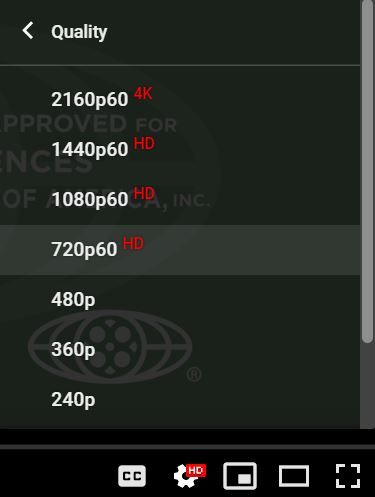Frame Rates Explained
Apr 26, 2019 • 9 views
In this age of high-speed internet, most of us have got accustomed to streaming YouTube videos in the highest resolution possible. Any resolution less than 480p can get pretty frustrating to watch. Meanwhile, YouTube further spoils us for choice by now offering resolution options upto 2160p (also known as 4K HD) However, most of us will never opt for that resolution for a variety of reasons. Firstly, the device you use to stream videos must have a screen with the same or greater resolution. Secondly, streaming such high quality videos might exact quite a toll on your data plan. Let’s admit it, most of us hover around the 720p mark which gives us that High Definition experience we crave, sans crawling buffering speeds.
You might now feel quite convinced that it’s only the resolution that contributes to the whole viewing experience. But, that’s only until you learn what frame rate is.
Remember those cool little flip books where a pad of paper had an image on every page, and when you flipped through the pages quickly, the image would appear to animate and move? This is essentially how video works. Whether digital or old-school film, video is a series of still images that, when viewed in order at a certain speed, give the appearance of motion.
The speed at which you ‘flip’ through the book, or how fast these images are shown is called the Frame Rate and it’s usually expressed as ‘frames per second’ or FPS.
The human eye is capable of differentiating upto 12 still images per second before it starts just perceiving it as motion. That is, at an FPS of 12 or less, your brain can tell that it’s just a bunch of still images in rapid succession.
Once the frame rate gets up to around 18 to 26 FPS, the motion effect actually takes effect and your brain is fooled into thinking that these individual images are actually a moving scene.
Back in 2014, YouTube added 48fps and 60fps playback support for ‘motion-intense’ videos uploaded to the service. Since then, many YouTubers are opting to upload videos of higher frame-rates and the reason is quite simple.

The frame rate of a video greatly impacts the look and feel of a video, which in turn determines how realistic the video appears. This concept is tied directly to how we naturally see the world.
If the frame rate is too low, the video will start to look choppy and will provide a poor experience. On the other hand, if the frame rate is too high, things will start to look unnatural. Essentially, the video actually shows too much detail, which makes the video look unnatural.
The resolution and frame rate are the two main factors that contribute to how realistic the video seems.
